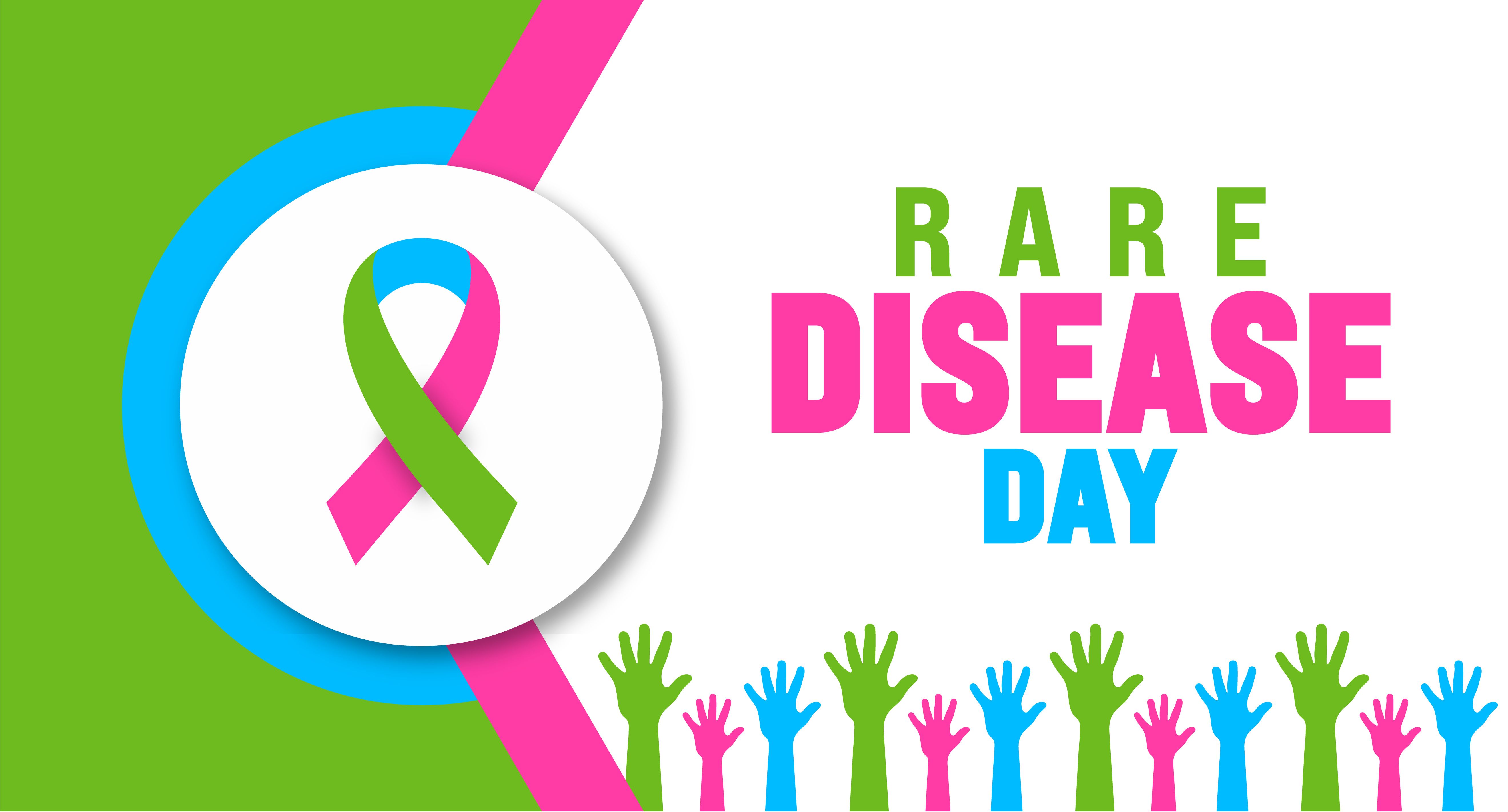- Acne
- Actinic Keratosis
- Aesthetics
- Alopecia
- Atopic Dermatitis
- Buy-and-Bill
- COVID-19
- Case-Based Roundtable
- Chronic Hand Eczema
- Chronic Spontaneous Urticaria
- Drug Watch
- Eczema
- General Dermatology
- Hidradenitis Suppurativa
- Melasma
- NP and PA
- Pediatric Dermatology
- Pigmentary Disorders
- Practice Management
- Precision Medicine and Biologics
- Prurigo Nodularis
- Psoriasis
- Psoriatic Arthritis
- Rare Disease
- Rosacea
- Skin Cancer
- Vitiligo
- Wound Care
News
Article
Rare Disease Rundown: Rare Disease News From the Past 365 Days
Author(s):
Today is Rare Disease Day. Here's a look back at news related to rare skin conditions over the past year.
Within the past year, rare disease states in dermatology have made significant strides in research, treatment, and awareness. This Rare Disease Day, Dermatology Times has compiled the top news and updates in rare dermatologic diseases from the last year.
Rare Disease and Artificial Intelligence
From our February publication, Joseph Zabinski, PhD, MEM, and Stefan Weiss, MD, MBA, FAAD, discuss the role of artificial intelligence (A)in addressing the challenges of diagnosing and treating rare dermatologic diseases, which can often be misdiagnosed due to a lack of data accessibility. They delved into the role of OM1's Patient Finder in identifying undiagnosed or misdiagnosed patients by analyzing data patterns. They also discussed the potential of AI to improve patient care by aiding in diagnosis, treatment, and data collection for rare diseases. Additionally, they addressed the importance of building trust in AI tools among clinicians and the need for explainability in AI-driven insights.
Read "Rare Disease Detection With AI: What Tools to Trust."
Congenital Ichthyosis
Timber Pharmaceuticals' topical isotretinoin, TMB-001, was granted breakthrough therapy designation by the FDA for congenital ichthyosis (CI) subtypes.1
Yale School of Medicine played a crucial role in the drug's development, being the sole US site involved in all 3 clinical trials. Christopher Bunick, MD, PhD, leading the CI trials at Yale, highlighted Yale's contributions, including the development of the Visual Index for Ichthyosis Severity scale. CI, characterized by dry, scaling skin, impacts patients' daily lives significantly, causing discomfort and emotional distress.
Clinical trials evaluating TMB-001 showed promising results, with participants experiencing improved skin conditions. Patients like Saiaditya Badeti, who participated in the trials, shared their struggles with CI and expressed hope for TMB-001's approval.
Data from a sub-analysis of Timber Pharmaceuticals’ phase 2b CONTROL study evaluating the safety and efficacy of TMB-001 for the treatment of CI was published online in Clinical and Experimental Dermatology.2
Additionally, results from the phase 3 ASCEND Study demonstrated that topical use of isotretinoin and its major metabolites showed minimal absorption when applied to 75-90% of the body surface in patients with CI.3
Later in the year, it was announced that LEO Pharma was to acquire Timber Pharmaceuticals and its assets, including TMB-001. Key asset acquisition was completed in January.
Epidermolysis Bullosa
Oleogel-S10, developed by Amryt Pharma, has been hailed as the first therapy to exhibit accelerated wound healing in epidermolysis bullosa (EB) wounds.
Dedee Murrell, MD, FAAD, presented findings from the 24-month open-label phase (OLP) 3 EASE study at the 2023 American Academy of Dermatology Annual Meeting, showcasing the therapy's long-term safety and efficacy. The study included patients with dystrophic EB and junctional EB, with significant reductions observed in wound burden and skin activity scores after treatment with Oleogel-S10. Oleogel-S10 demonstrated significant wound healing during the 90-day double-blind phase of the phase 3 EASE study.4
In late July, Abeona Therapeutics Inc announced it had filed a a briefing packing filing to the US Food and Drug Administration ahead of its the pre-Biologics License Application meeting in August, related to EB-101. Just a few months later, it was announced that Abeona had submitted the BLA for EB-101 to the FDA for Priority Review and approval for recessive dystrophic EB.
Most recently, the FDA approved topical gel Filsuvez (birch triterpenes) topical gel for the treatment of partial thickness wounds related to dystrophic and junctional EB in patients 6 months and older.5
Lymphatic Malformations
QTORIN 3.9% anhydrous rapamycin gel (QTORIN rapamycin) produced positive results in treating microcystic lymphatic malformations (microcystic LMs), according to topline phase 2 results shared in March.
The study involved 12 participants with microcystic LMs, each of whom were asked to use QTORIN rapamycin on a once-daily basis for a duration of 12 weeks. Researchers assessed participants on Clinician Global Impression of Change and Patient Global Impression of Change scales. At the conclusion of the 12-week period, all participants had demonstrable improvement in accordance with both scales. Researchers marked them either “Much Improved” or “Very Much Improved” as a result.6
In November, the FDA granted QTORIN rapamycin a Breakthrough Therapy Designation for this indication.
Necrobiosis Lipoidica
In a female, prediabetic patient with nonulcerated necrobiosis lipoidica, topical tapinarof cream demonstrated notable efficacy and presented as a potential therapeutic option. The therapy, they found, was capable of targeting multiple pathways and did not pose a risk of serious adverse events.7
In pediatric patients, researchers found that necrobiosis lipoidica yields a 40% treatment failure rate. Of the local and systemic treatments included in the review, 29.1% led to partial response. In 5 patients receiving monotherapy, for example, which included topical steroid use, NL improvement was achieved. However, 54.5% of therapies were deemed unsuccessful.8
Pansclerotic Morphea
Scientists affiliated with the National Institutes of Health and their colleagues identified a potential treatment option for disabling pansclerotic morphea (DPM).
In an investigative study, researchers evaluated 4 patients with DPM, all of whom had an autosomal dominant pattern of inheritance. They conducted genomic sequencing, primary skin fibroblast and cell-line assays, and gene expression in the process. They discovered that all 4 patients with the disease had overreactive signal transducer and activator of transcription 4 (STAT4) proteins.9
They also made the following discoveries:
- Genome sequencing revealed 3 novel heterozygous missense gain-of-function variants in STAT4
- Primary skin fibroblasts showed enhanced interleukin-6 secretion, with impaired wound healing, contraction of the collagen matrix, and matrix secretion
- Inhibition of Janus kinase (JAK)–STAT signaling with ruxolitinib led to improvement in the hyperinflammatory fibroblast phenotype in vitro and resolution of inflammatory markers and clinical symptoms in treated patients, without adverse effects
- Single-cell RNA sequencing revealed expression patterns consistent with an immunodysregulatory phenotype that were appropriately modified through JAK inhibition
Scleroderma
In October, the FDA cleared the third investigational new drug application of KYV-101 by Kyverna Therapeutics for the treatment of diffuse cutaneous systemic sclerosis, or scleroderma. The FDA clearance allowed Kyverna to begin its phase 1/2 open-label, multicenter study of KYV-101.10
With the third approved IND, KYV-101 is a novel, fully human anti-CD19 CAR T-cell therapy that is designed for use in B cell-driven autoimmune diseases such as lupus nephritis, scleroderma, and other B cell-driven autoimmune diseases.
References
- Shelton J. Yale tests a treatment for skin diseases that often target children. YaleNews. Published February 9, 2023. Accessed February 28, 2024. https://news.yale.edu/2023/02/09/yale-tests-treatment-skin-diseases-often-target-children
- Timber Pharmaceuticals announces publication of sub-analysis of phase 2b CONTROL study in Clinical and Experimental Dermatology. Timber Pharmaceuticals. Published March 20, 2023. Accessed February 28, 2024. https://www.globenewswire.com/news-release/2023/03/20/2630210/0/en/Timber-Pharmaceuticals-Announces-Publication-of-Sub-Analysis-of-Phase-2b-CONTROL-study-in-Clinical-and-Experimental-Dermatology.html
- Timber Pharmaceuticals to Present Interim Analyses From Phase 3 ASCEND Study of TMB-001 in Congenital Ichthyosis. News Release. Globe Newswire. June 20, 2023. Accessed June 21, 2023. https://www.globenewswire.com/news-release/2023/06/20/2691018/0/en/Timber-Pharmaceuticals-to-Present-Interim-Analyses-From-Phase-3-ASCEND-Study-of-TMB-001-in-Congenital-Ichthyosis.html
- Murrel D. Long-term safety and efficacy of Oleogel-S10 (birch triterpenes) in the treatment of epidermolysis bullosa wounds: Results from the 24-month open-label study of the EASE study. Presented at the Late-Breaking Research: Session 2 at the 2023 American Academy of Dermatology Annual Meeting; March 17-21, 2023; New Orleans, LA.
- Chiesi Global Rare Diseases. Chiesi Global Rare Diseases receives FDA approval for FILSUVEZ (birch triterpenes) topical gel for the treatment of epidermolysis bullosa. GlobeNewswire News Room. December 19, 2023. Accessed February 28, 2024. https://www.globenewswire.com/news-release/2023/12/19/2798751/0/en/Chiesi-Global-Rare-Diseases-Receives-FDA-Approval-for-FILSUVEZ-birch-triterpenes-topical-gel-for-the-Treatment-of-Epidermolysis-Bullosa.html
- Palvella Therapeutics. Palvella Therapeutics announces positive topline results from phase 2 study of QTORIN™ 3.9% rapamycin anhydrous gel (QTORIN™ rapamycin) for the treatment of microcystic lymphatic malformations, a serious, rare genetic skin disease with no FDA-approved therapies. GlobeNewswire News Room. https://www.globenewswire.com/news-release/2023/03/09/2623986/0/en/Palvella-Therapeutics-Announces-Positive-Topline-Results-from-Phase-2-Study-of-QTORIN-3-9-Rapamycin-Anhydrous-Gel-QTORIN-rapamycin-for-the-Treatment-of-Microcystic-Lymphatic-Malfor.html. Published March 9, 2023. Accessed February 28, 2024.
- Palomares S, Farberg A. Nonulcerated necrobiosis lipoidica successfully treated with tapinarof. Poster presented at the 2023 Society of Dermatology Physician Assistants (SPDA) Annual Summer Dermatology Conference; June 22-25, 2023; Boston, MA.
- Schiefer‐Niederkorn A, Sadoghi B, Binder B. Necrobiosis lipoidica in childhood: a review of literature with emphasis on therapy. J Dtsch Dermatol Ges. Published online July 3, 2023. Accessed February 28, 2024. doi:10.1111/ddg.15137
- NIH scientists find treatment for rare genetic skin disorder. National Institutes of Health. May 31, 2023. Accessed February 28, 2024. https://www.nih.gov/news-events/news-releases/nih-scientists-find-treatment-rare-genetic-skin-disorder.
- Kyverna Therapeutics announces FDA clearance of IND for KYV-101, a novel fully human CD19 CAR T-cell therapy to treat scleroderma. PR Newswire. News release. October 11, 2023. Accessed February 28, 2024. https://www.prnewswire.com/news-releases/kyverna-therapeutics-announces-fda-clearance-of-ind-for-kyv-101-a-novel-fully-human-cd19-car-t-cell-therapy-to-treat-scleroderma-301953561.html#:~:text=EMERYVILLE%2C%20Calif.%2C%20Oct.,for%20KYV-101%20by%20the
Newsletter
Like what you’re reading? Subscribe to Dermatology Times for weekly updates on therapies, innovations, and real-world practice tips.








